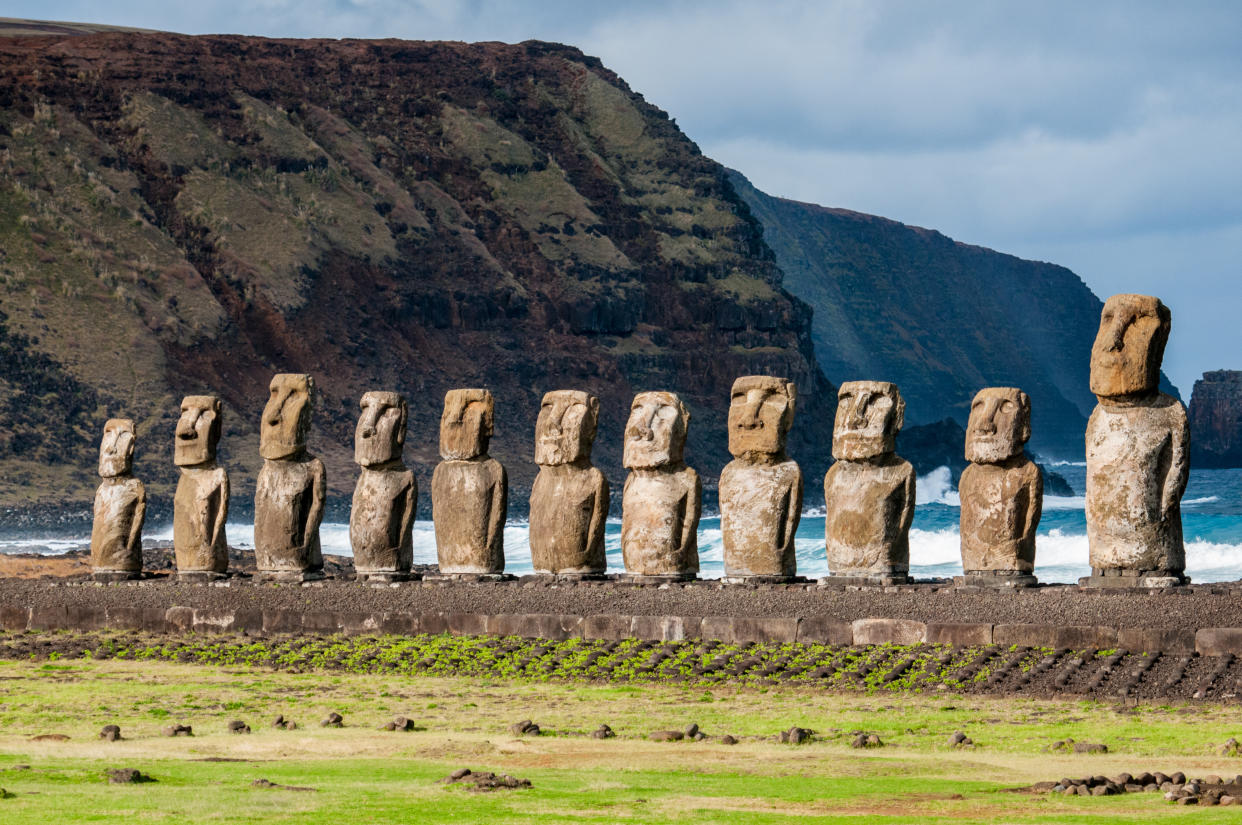Mystery of Easter Island statues becomes clearer as scientists investigate quarry

They’re some of the most mysterious relics on our planet, but scientists may finally have worked out one of the secrets behind the creation of the Easter Island statues.
The ancient Rapa Nui people of Easter Island carved and transported the island’s 900 large statues by hand, and believed that they were responsible for agricultural fertility and food.
Now researchers excavating the quarry where most of the statues were hewn have found evidence that the quarrying process itself actually improved the land.
Researchers led by Jo Anne Van Tilburg, director of the Easter Island Statue Project, found that the Rano Raraku quarry was also an important agricultural site.
READ MORE
Easter Island statues under threat from ‘nose pick selfies’
We SHOULD be scared of climate change, says senior scientist
Orangutan saved by vets after being found blind and riddled with airgun pellets
How bad is the WhatsApp surveillance attack
Transplant patient’s DNA is replaced with his donor’s
Ms Van Tilburg’s team found evidence of plants such as banana, taro and sweet potato at the site.
She said: “Our excavation broadens our perspective of the Moai and encourages us to realise that nothing, no matter how obvious, is ever exactly as it seems.
“I think our new analysis humanises the production process of the Moai.”
Soil specialist Sarah Sherwood said: “The soil chemistry showed high levels of elements that are key to plant growth and essential for high yields.
“Everywhere else on the island the soil was being quickly worn out, eroding, being leeched of elements that feed plants, but in the quarry, with its constant new influx of small fragments of the bedrock generated by the quarrying process, there is a perfect feedback system of water, natural fertiliser and nutrients.”

The researchers analysed two Moai which were upright in place at the quarry, hinting that they were built to remain there.
Van Tilburg said: ‘This study radically alters the idea that all standing statues in Rano Raraku were simply awaiting transport out of the quarry.
‘That is, these and probably other upright Moai in Rano Raraku were retained in place to ensure the sacred nature of the quarry itself.
‘The Moai were central to the idea of fertility, and in Rapanui belief their presence here stimulated agricultural food production.’


